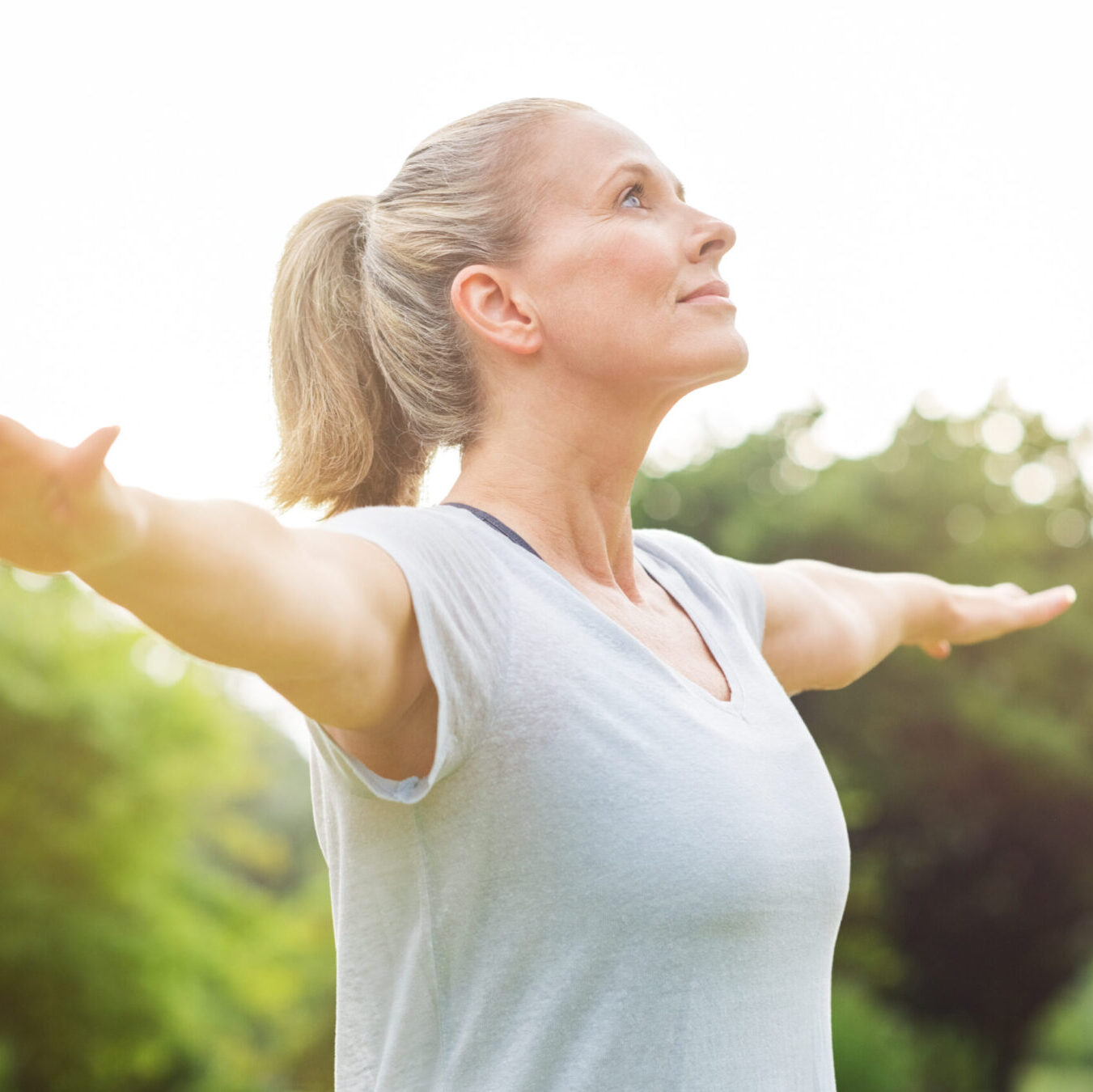We’ve all heard about the importance of exercise but in midlife what we enjoy and what we need changes. Gone are the days of step aerobics and you may find that you no longer have the same energy for exercise as you had in your thirties. Your forties are often a juggle of career and family responsibilities, and regular exercise just keeps slipping down the priority list.
Now in your forties and fifties, with menopause looming what worked previously now just doesn’t have the same impact. Weight gain is often the trigger for many to move more but what to do and how often. The options seem to be endless, there’s low-impact, high intensity, every-day, mix-it-up, the advice is endless. Where do you start to find the right exercise that your body needs not only, now, but to ensure you maintain strength and flexibility for the years to come.
For women at this stage of life there are 4 areas of exercise that are needed to stay healthy and ease the symptoms of menopause.
Strength & Resistance: This one is the most important and should be your main focus. Strength and resistance training not only helps strengthen your muscles, it is crucial for maintaining strong bones. In many cases osteoporosis and its predecessor, osteopenia can be prevented with weight and resistance training. Numerous studies have shown that on average, women lose 1% bone density every year after the age of 40. In addition, there is strong evidence that strength training can slow the decline in bone density and for some, even rebuild bone strength. As well as looking and feeling strong and toned you will boost your metabolism which makes it easier to lose those extra kilos that may have crept on, therefore making it easier to maintain a healthy weight. This type of exercise doesn’t have to mean weightlifter barbells. Instead, look for light-moderate hand-weights, resistance bands, Pilates reformer, even your own body weight.
Aerobic: Moderate intensity exercise has a number of benefits particularly for pre and post-menopausal woman. You’ll experience a significant reduction in circulating oestrogens from three hours of moderate intensity exercise per week, providing an effective way to reduce your risk of breast cancer. What is classed as moderate? A good rule of thumb is that you can talk but are too puffed to sing. Start with just 5-10 minutes of any exercise that increases your heart rate and increase the time slowly. In addition, aerobic activity will help to increase your metabolism (making weight control easier) and boost your endorphins which help to reduce stress and increase feelings of happiness.
Stretch: Maintaining flexibility and mobility is important to ensure you stay injury free and active. For example, limited mobility in a joint will reduce the range of movement and result in a greater chance of strains and sprains. Take the time to stretch properly after your aerobic and strength exercise, while the body is warm and pliable. A good option is to include a weekly yoga class to incorporate some deeper stretches. This will also broaden your knowledge of stretches (and the correct technique) so you can do some at home more regularly.
Balance: Think of this as a life skill. You can practice balancing anywhere with no workout gear required. Start small by standing on one leg each time you brush your teeth. If you’re a little wobbly, keep the other leg lightly tapping the floor until you feel stronger. When you can comfortably do this then move to more difficult balances such as aeroplane. Standing on one leg, slowly sweep the other left behind and lower the upper body forward until you come into a T shape. Keep a soft bend in the standing leg for knee safety and use your core to stabilise. Work on your balances regularly and your stability will improve. Not only will this help your mind and body find balance, you’ll set yourself up to prevent falls and trips which can be devastating in older age.
While this information helps us to focus our exercise in the right areas, the main improvement is most definitely mental and emotional. Feeling fitter, stronger and more flexible physically will empower a positive mindset, enhance confidence and help to manage stress. Regular exercise has been proven to be a major factor in reducing the severity and incidence of depression. Don’t look for a quick fix, enjoy the process of enhancing your mind and body and in the process, taking precious time for yourself. Many women around this age start to feel that their best years are behind them – we’re here to tell you they’re most definitely not!

